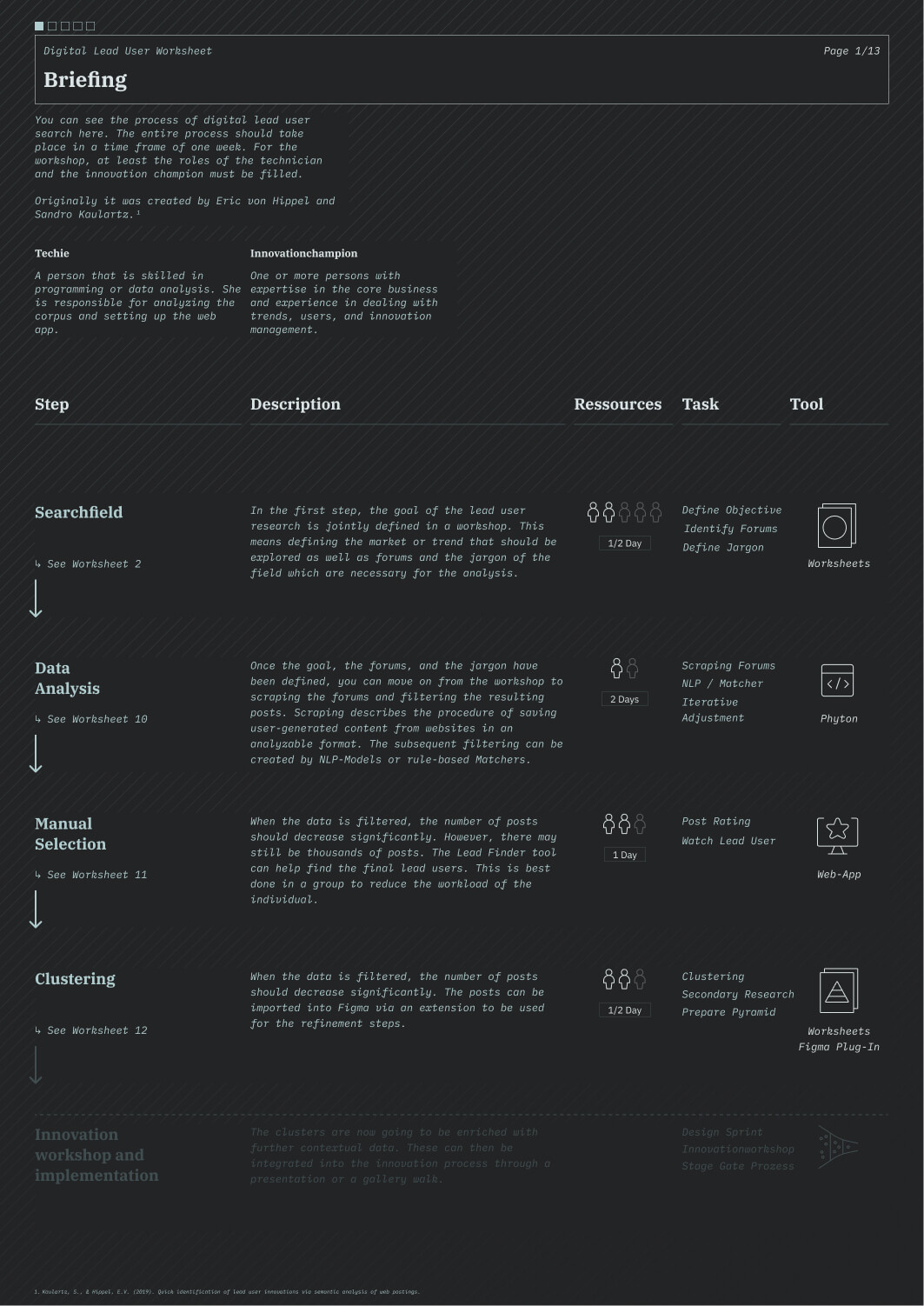
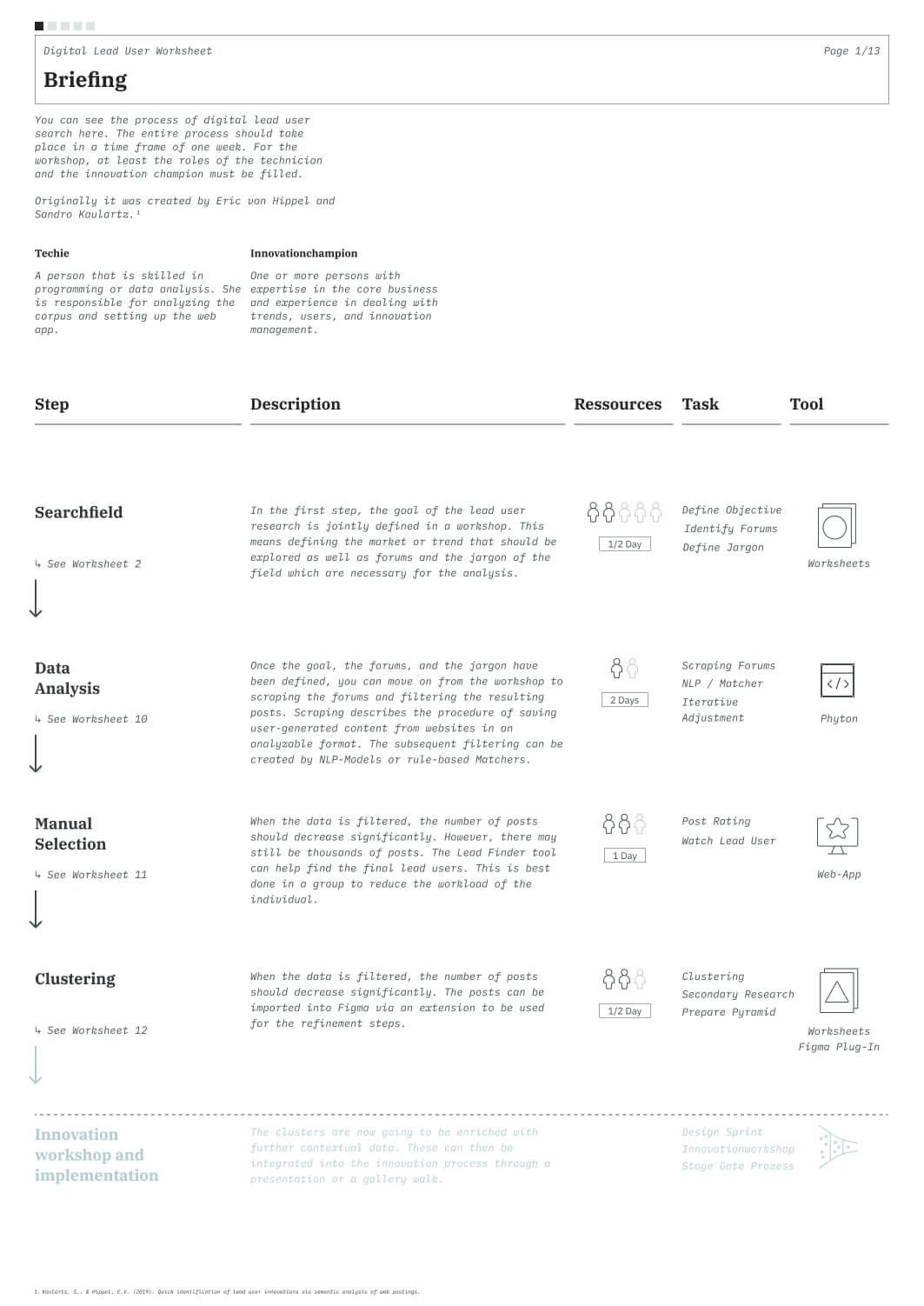





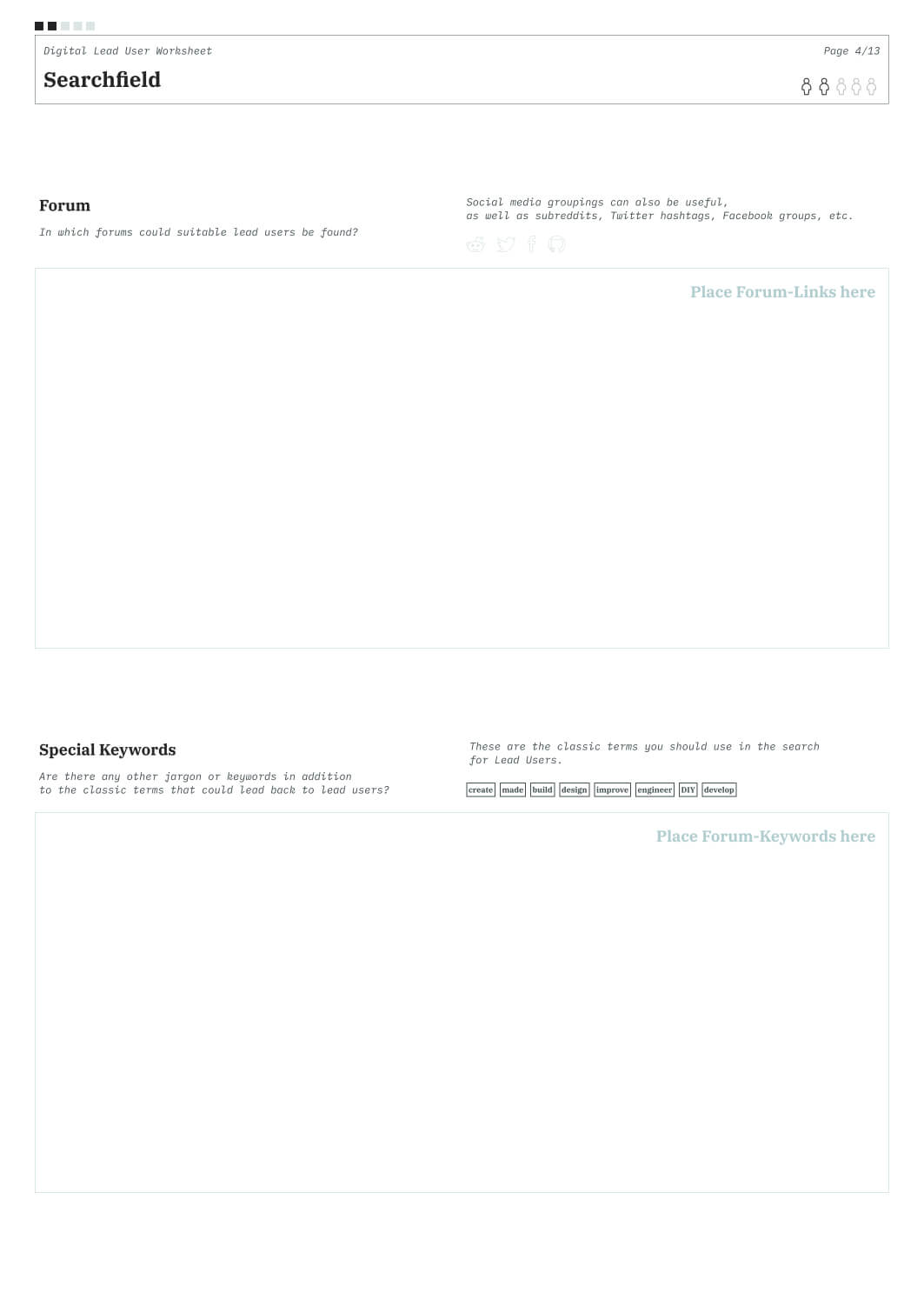
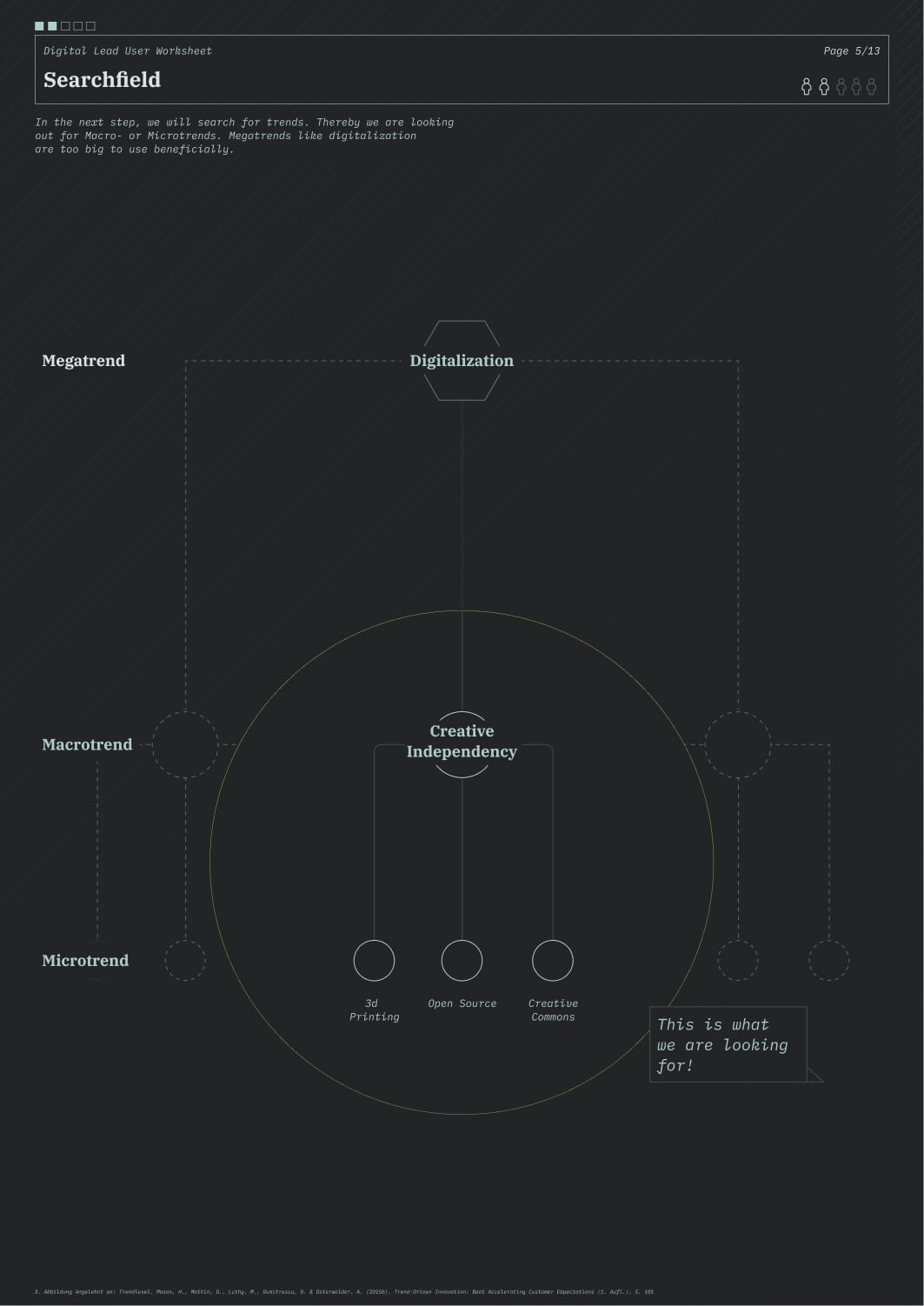







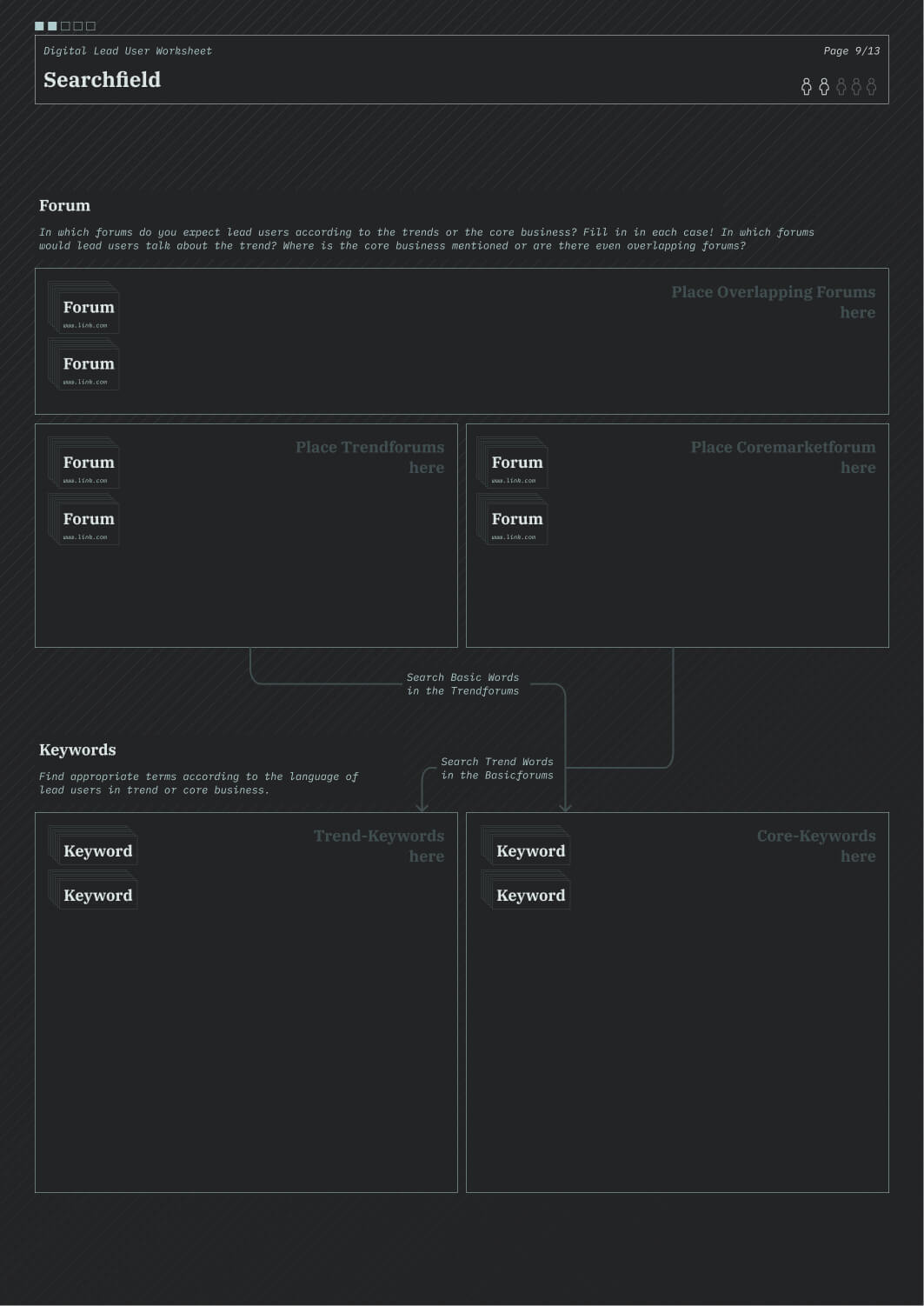
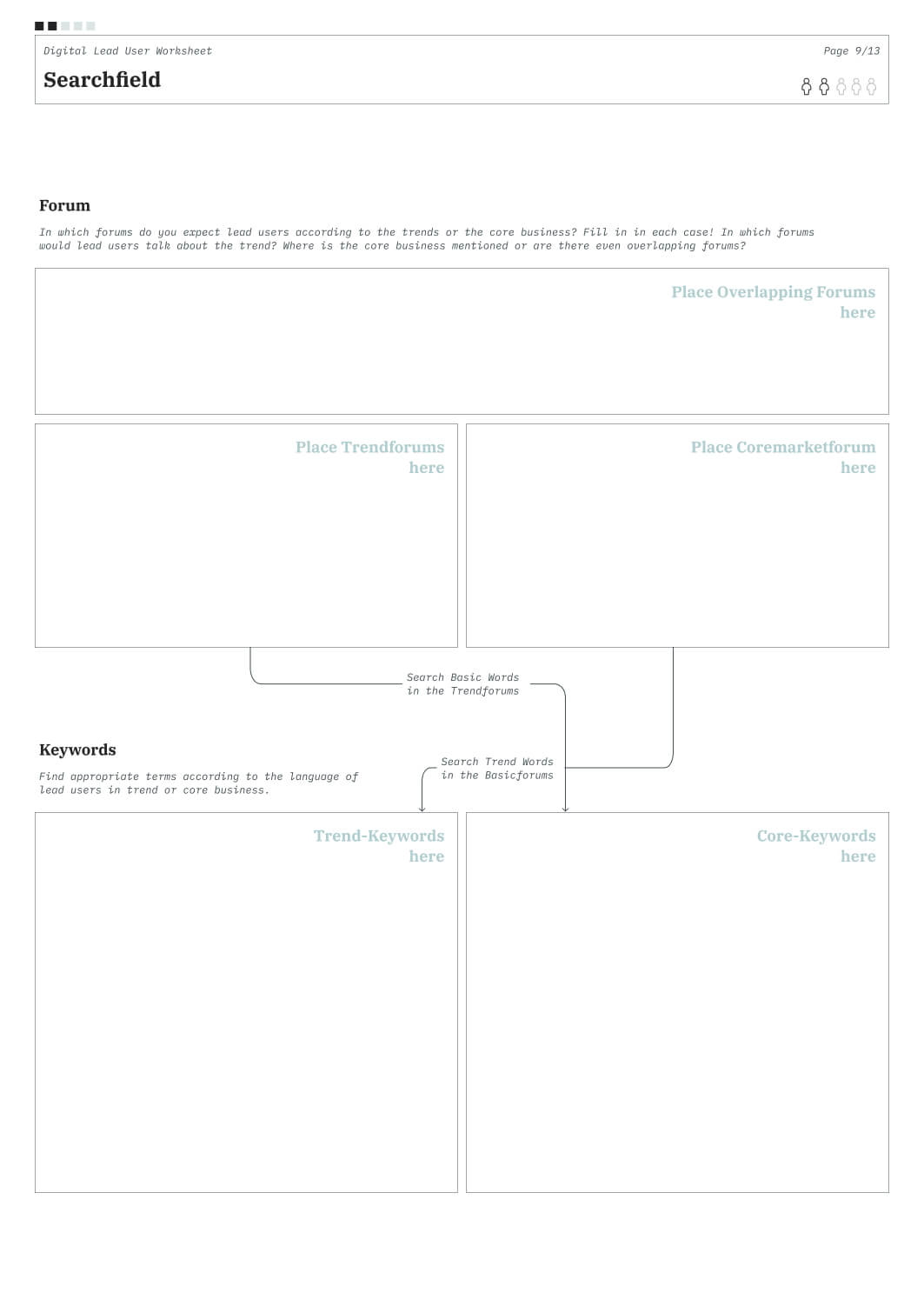
Masterthesis @HfG-Gmuend
Utilizing the Digital Lead User Analysis Originially by Eric von Hippel & Sandro Kaulartz. Set in context by Marius Schnabel and Josh Cornau
Intrinsic Motivation
Unconventional Needs
Expertise
Dissatisfaction With the Market
Skills in the Field
The ditigal Lead User Analysis is a method to find innovations from pioneer users. Their innovations can be used to identify future relevant customer needs that have not been solved by the market yet.
In our Master's thesis, we took the approach of Eric von Hippel and Sandro Kaulartz and put it into an applicable context using methods from strategic design.
Jens Lehnen
When using this method, you should be aware that it will not work in every field and not for every application. From recent experiences the method works best to recognize disruption, to explore a new market or to understand the application of a trend in your core business.
You can see here the process of digital lead user search. The whole process is meant in a time frame of one week. You should at least be able to fill the roles of techie and innovation champion.
A person skilled in programming or data who is responsible for programming the Matcher and setting up the web app.
One or more persons with expertise in the core business and experience in dealing with trends, users and innovation management.


















Once the goal, the forums and the jargon have been defined, you can move on from the workshop to scraping the forums and filtering the resulting posts. Scraping or spidering describes the procedure of saving user-generated content from websites in a table or in a JSON-file. The subsequent filtering can be created by an NLP or Matcher.
When the data is filtered, the amount of posts should be significantly reduced. Nevertheless, it can be several thousands of posts. The Lead Finder tool can help to find the final Lead Users. In the best case, the data to be analysed is divided into a group to reduce the workload of the individual.
The sorted out posts can be imported into the whiteboard tool FigJam to be used for the further work steps. First, the lead user posts are to be brought together in clusters and synthesised according to their basic needs. A pyramid model was created to help them validate the need of the lead user posts. A second research is recommended and an extension with further figures, data and qualitative impressions.
The clusters are now enriched with further contextual data. These can be integrated into the innovation process through a presentation or a gallery walk.